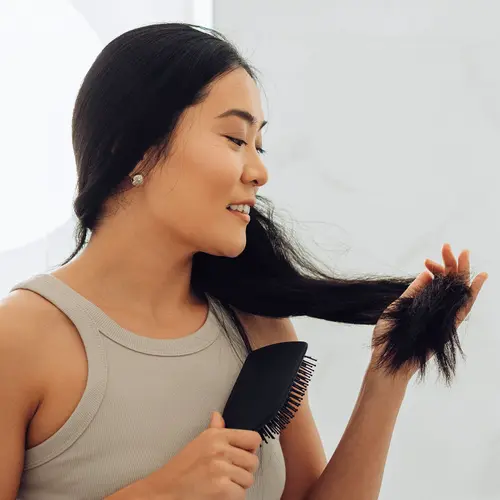By now, most of us know that the glow and picture-perfect finish on the faces of celebrities and super models isn’t all natural born beauty. Much of it begins with makeup primer and a good foundation.
Applying primer and foundation is pretty easy, but sorting through the promises, claims, colors, and choices of foundations and primers can be more of a challenge.
What Is Makeup Primer?
If you’ve ever primed a wall for paint, you know that primer prepares the surface so that the paint goes on smoother and lasts longer. Makeup primer serves the same purpose on your face. It evens out the skin’s surface so that foundation makeup goes on better and lasts longer.
Philadelphia dermatologist Naheed Ali, MD, says, “Primers are expected to even out skin tone and get rid of sunken pores or scars while brightening the face.” Primers can fill in fine lines, deeper wrinkles, and enlarged pores while minimizing the signs of aging.
“The idea is that tiny molecules settle into small lines and pores, giving the illusion of a smoother skin texture,” Kerry-Lou Brehm, a Manhattan fashion district makeup artist, says. Primer can be worn by itself or under foundation.
What Is Foundation Makeup?
“Foundation makeup’s purpose is to even out skin color and cover blemishes and imperfections,” Brehm says. “The better the skin condition, the less foundation is needed.”
Foundations come in different shades and formulas. They also offer different benefits. Some moisturize dry skin. Oil-free formulas are best for skin that is prone to acne or breakouts. Some foundations contain silicone and others are water based, so if you’re allergy-prone, you have an alternative. Some nourish the skin in addition to improving its appearance.
Finding the Right Foundation for You
Foundation makeup is available in stick, liquid, pressed powder, cream, and mineral form. Most makeup brands offer foundation in sheer, light, medium, or full formulas. These guidelines can help you pick and put on foundation:
- Liquid and cream foundations. “Most liquid [and cream] foundations do not give as much coverage as a stick foundation,” Brehm says. “They are typically lighter, so it’s a good idea to apply them with a foundation brush or sponge.”
- Stick foundations. “Stick foundation is typically heavier and provides more coverage than liquid foundation,” Brehm says. “When a good color match is found, the stick foundation can be applied directly only to areas that need the most coverage.” A slightly dampened sponge can help eradicate mistakes such as streakiness or uneven application.
- Pressed powders. These tend to provide heavier foundation coverage. If, though, you are in your 40s or don’t want to advertise lines and wrinkles, avoid powder foundation or foundation with a shimmer. Apply powders dry with a clean puff or with a dampened sponge.
- Mineral foundation. Although it resembles traditional loose powder, mineral foundation makeup is made with minerals and not talc. “Women with rosacea and skin sensitivities tend to like this type of makeup and find it gentle on the skin,” Brehm says.
Chosing Your Perfect Shade
Foundations come in different skin shades. Matching your skin with the right shade isn’t always easy. Use these four steps to find the best match:
- Choose the three closest shades to your natural skin color. A makeup artist at the cosmetics counter can assist you with this.
- Dot the three shades along your jawbone area.
- Look at them in an area with good daylight, even if that means going out to the parking lot with a hand mirror.
- Select the one that looks closest to wearing no makeup.
Tips from the Pros
For best results with primer and foundation, try these strategies.
- Ali recommends applying products to a clean face. Harmful particles can clog up the skin’s oil and sebaceous glands that normally keep the skin looking moist with a nice sheen.
- A tinted moisturizer may provide enough coverage. “For good skin without blemishes, I recommend the use of a tinted moisturizer, which will even out skin tone but give very little coverage,” Brehm says.
- Some makeup experts suggest that women start using a good face serum around age 35. A serum can boost the effects of moisturizer or primer because its smaller molecules penetrate the skin deeper. Along with a primer, it may help you look younger.


